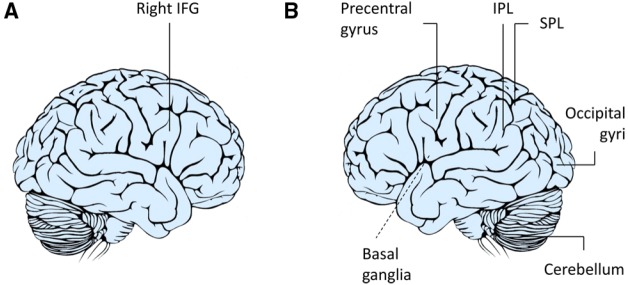FIGURE 1.

Neuroimaging studies of complementary actions. A number of studies have suggested that the right IFG (A) is not only involved when we respond to the actions of others by doing the same as they do (imitation) but also when responding with complementary actions (Newman-Norlund et al., 2007a,b, 2008; Ocampo et al., 2011; Shibata et al., 2011). In contrast, others hypothesize that the flexibility required during complementary actions requires a large network (B) including the IFG, IPL, superior parietal lobule (SPL), precentral gyrus, basal ganglia, middle and temporal occipital gyri, and cerebellum to be involved in integrating one’s own actions to those of others (Kokal et al., 2009; Kokal and Keysers, 2010).
